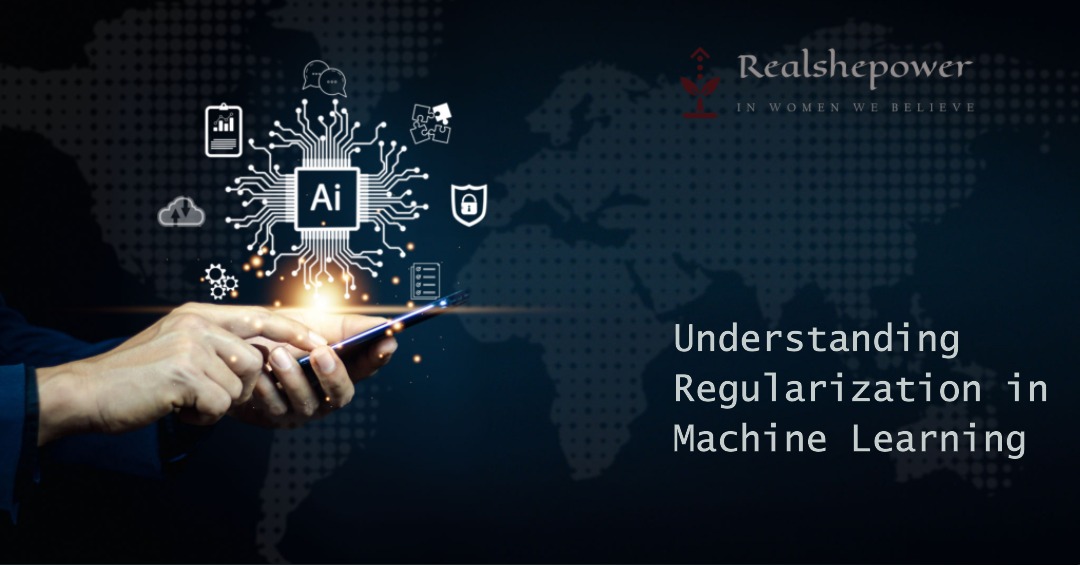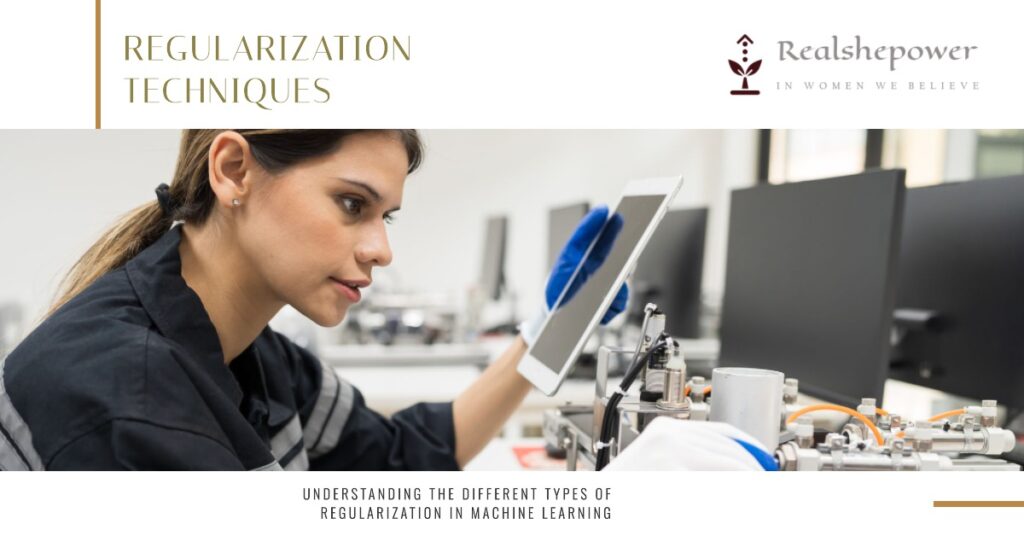What Is Regularization In Machine Learning?


Introduction
Regularization is the secret sauce that brings order to the chaos of machine learning models. When we’re training our models on vast amounts of data, there’s always a risk of overfitting—the model becomes too specialized in the training data, losing its ability to generalize to unseen examples. Regularization swoops in to save the day by imposing a penalty on excessively complex models, nudging them towards simplicity and improved generalization. By adding a touch of regularization, we can strike the perfect balance between capturing intricate patterns in the data and avoiding the pitfalls of overfitting.
Regularization is like a disciplined coach for our models, ensuring they stay focused and don’t get carried away with unnecessary complexity. It is the yin to overfitting’s yang, the guiding light that leads us to more accurate predictions and robust models. Now, let’s dive deeper into this powerful technique and explore its various flavors and benefits.
Table of Contents
What Is Regularization In Machine Learning?

Regularization is the secret weapon that empowers machine learning models to achieve optimal performance. In the realm of machine learning, where accuracy and generalization are paramount, overfitting poses a significant challenge. But fear not, for regularization comes to the rescue as a powerful technique that ensures models strike the perfect balance between complexity and simplicity, paving the way for improved generalization and superior predictions.
In essence, regularization is a method that introduces a penalty term to the loss function during model training. This penalty term acts as a guiding force, discouraging models from becoming overly complex and combating the adverse effects of overfitting. By adding a touch of regularization, models can effectively navigate the fine line between capturing intricate patterns in the data and avoiding the dangers of overfitting.
The Role of Regularization in Reducing Overfitting
Overfitting is the nemesis that haunts every machine learning practitioner. It occurs when a model becomes excessively specialized in the training data, losing its ability to generalize to unseen examples. Regularization comes to the rescue by constraining the model’s complexity, preventing it from memorizing the training set and capturing noise rather than meaningful patterns.
By adding a regularization term to the loss function, we introduce a trade-off between the model’s goodness of fit and its complexity. This forces the model to find the optimal balance that minimizes the loss while avoiding excessive complexity. In simpler terms, regularization prevents the model from getting too cocky, ensuring it stays humble and avoids the pitfall of overfitting.
Types of Regularization Techniques

Now that we’ve grasped the essence of regularization, let’s explore some of the popular techniques that make it possible.
1. L1 Regularization: The Gatekeeper of Sparse Solutions
L1 regularization, my friend, is like the strict bouncer at the entrance of a trendy nightclub. It allows only the most important features to enter the party while sending the rest to wait outside. In this technique, a penalty proportional to the absolute value of the model’s weights is added to the loss function. This encourages the model to assign zero weights to less important features, effectively performing feature selection.
2. L2 Regularization: The Harmony Seeker
L2 regularization is the peacemaker in the world of machine learning. It adds a penalty term proportional to the square of the model’s weights to the loss function. This gentle nudge encourages the model to distribute its weights more evenly, avoiding extreme values and achieving a smoother, more balanced solution.
3. Elastic Net Regularization: The Best of Both Worlds
Elastic Net regularization combines the powers of L1 and L2 regularization, offering a flexible approach to model regularization. It combines the feature selection capability of L1 regularization with the stability and balance of L2 regularization. Elastic Net strikes a harmonious chord, creating a robust and well-rounded model that is resistant to noise and outliers.
4. Dropout: The Dynamic Pruner
Dropout regularization is like a pruning master in the realm of neural networks. It works by randomly dropping out (setting to zero) a certain percentage of neurons during the training process. This technique introduces a level of uncertainty and forces the network to learn redundant representations, making it more robust and less reliant on specific neurons. Dropout acts as a regularizer by preventing co-adaptation of neurons and promoting generalization.
5. Early Stopping: The Intuition Seeker
Early stopping is a clever technique that relies on the principle of patience. Instead of training a model for a fixed number of epochs, early stopping monitors the model’s performance on a validation set during training. It stops the training process when the validation performance starts deteriorating, indicating that the model has reached its optimal point and further training may lead to overfitting. By preventing the model from excessively learning the noise in the data, early stopping ensures better generalization.
6. Max Norm Regularization: The Boundary Setter
Max Norm regularization is like a strict boundary setter for the weights of a neural network. It constrains the magnitude of the weights by enforcing an upper limit, known as the max norm. This technique prevents individual weights from growing excessively and keeps them within a reasonable range. By imposing this constraint, max norm regularization promotes stable learning, prevents overfitting, and enhances model generalization.
7. Data Augmentation: The Creative Transformer
Data augmentation is a regularization technique that adds a touch of creativity to the mix. It involves artificially expanding the training dataset by applying various transformations to the existing data. For example, in image classification tasks, data augmentation can include random rotations, flips, zooms, or translations. By introducing these variations, data augmentation enriches the training set and helps the model generalize better to unseen examples, reducing overfitting.
8. Batch Normalization: The Harmonizer
Batch normalization is a regularization technique that brings stability to the training process. It operates by normalizing the activations of each layer within a neural network batch-wise. This normalization ensures that the inputs to subsequent layers are centered and have a consistent scale, which accelerates the training process and reduces the chances of overfitting. Batch normalization acts as a regularizer by adding noise to the network, making it more robust to small changes in the input data.
9. Weight Decay: The Restraint Enforcer
Weight decay is a regularization technique that adds a penalty term directly to the loss function based on the magnitude of the model’s weights. It discourages large weights and encourages the model to prioritize smaller weights. By doing so, weight decay prevents the model from becoming overly complex and reduces the risk of overfitting. This technique is closely related to L2 regularization and is often used interchangeably.
FAQs about Regularization

Now that we’ve explored the intricacies of regularization, let’s address some common questions that might be lingering in your mind:
Q: Does regularization affect model performance?
A: Absolutely! Regularization plays a vital role in improving model performance by reducing overfitting and enhancing generalization capabilities.
Q: Can regularization be applied to any machine learning algorithm?
A: Indeed! Regularization is a versatile technique that can be applied to a wide range of machine learning algorithms, including linear regression, logistic regression, support vector machines, and neural networks.
Q: How do I choose the right regularization parameter?
A: The choice of the regularization parameter depends on various factors, such as the complexity of the problem, the amount of available data, and the desired level of model interpretability. It often requires careful experimentation and fine-tuning.
Q: Can regularization completely eliminate overfitting?
A: While regularization is a powerful technique for mitigating overfitting, it cannot completely eliminate it. However, it significantly reduces the risk and allows models to generalize better.
Q: Are there any drawbacks or trade-offs of using regularization?
A: While regularization offers significant benefits, it’s important to consider potential trade-offs. In some cases, regularization may lead to underfitting, where the model is too simplistic and fails to capture important patterns in the data. Additionally, choosing an inappropriate regularization parameter or applying regularization excessively can hinder model performance. Careful experimentation and validation are essential to strike the right balance.
Q: Can regularization be used for feature engineering or data preprocessing?
A: Regularization primarily focuses on model complexity and weight regularization. However, it indirectly affects feature importance and selection, which can be considered as a form of feature engineering. By penalizing less important features, regularization promotes feature selection and can contribute to better feature engineering practices.
Q: Is there a relationship between regularization and model interpretability?
A: Indeed! Regularization can enhance model interpretability by encouraging sparsity (in the case of L1 regularization) or balancing feature weights (in the case of L2 regularization). Sparse models with fewer non-zero weights are easier to interpret and highlight the most important features. By promoting simpler and more interpretable models, regularization aids in extracting meaningful insights from machine learning models.
Q: Can regularization be combined with other techniques to further improve model performance?
A: Absolutely! Regularization can be combined with other techniques to amplify its impact and enhance model performance. For instance, ensemble methods like bagging or boosting can be coupled with regularization to create more robust and accurate models. Additionally, techniques such as cross-validation and early stopping can complement regularization, aiding in model selection and preventing overfitting.
Q: Does the effectiveness of regularization depend on the size of the dataset?
A: The size of the dataset indeed plays a role in the effectiveness of regularization. In general, larger datasets provide more samples for the model to learn from, reducing the risk of overfitting. With smaller datasets, regularization becomes even more crucial to prevent overfitting and improve model generalization. However, finding the optimal regularization parameter may require more careful tuning when working with smaller datasets.
In a Nutshell
Regularization in machine learning is like a guiding compass, steering models away from the treacherous path of overfitting and towards the realm of improved generalization. By imposing a penalty on complexity, regularization strikes the perfect balance, enhancing model performance and predictive accuracy. With its various flavors and techniques, regularization empowers machine learning practitioners to build robust models capable of tackling real-world challenges.
So, my fellow adventurer in the realm of machine learning, embrace the power of regularization, and let your models flourish with a newfound precision. What are you waiting for? Harness this incredible technique and unlock the true potential of your machine learning endeavors. The world of possibilities awaits!
Note: This article is intended to provide an overview of regularization in machine learning and does not delve into advanced mathematical concepts. For a deeper understanding, it is recommended to explore the relevant academic literature and resources.
More on Machine Learning
- Power of Machine Learning: A Beginner’s Guide to AI-driven Solutions
- Practical TensorFlow: Teaching Deep Learning with Hands-on Examples
- Mastering Deep Learning with Open-Source Libraries: TensorFlow, Keras, and PyTorch
- Unveiling the Truth: Is Machine Learning AI? | Find Out Here!
- The Rise of Open-Source Big Data Platforms: A Comparison of Apache Hadoop, Spark, and Flink

You can now write for RSP Magazine and be a part of the community. Share your stories and opinions with us here.
